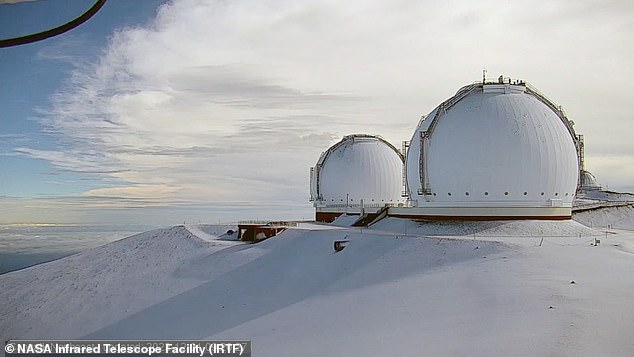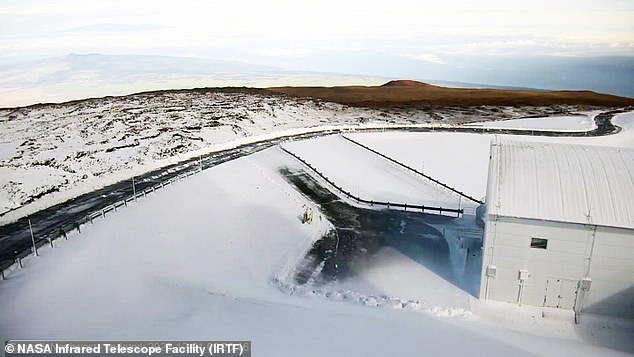HAWAII receives heavy coating of the white stuff as winter weather hits the peaks of Big Island
- Snow fell on Hawaii's Big Island on Friday, with the peaks of Mauna Kea and Mauna Loa, at nearly 13,000 feet, covered in six inches of snow
- The snow was brought in by a weather system called Kona: a low-pressure system from the mid-latitudes that draws tropical moisture north, flooding Hawaii.
- The peaks of the Big Island will become snow-covered in winter: the most snow recorded was in 2016, when the highest point, Mauna Kea, was estimated at 21 feet.
The peaks of Hawaii's tallest mountains were covered in snow Friday as a Kona weather system that drenched the lower areas blanketed the summit with snow.
Snow was recorded at the top of the Big Island's highest mountains, Manua Kea and Manua Loa, both of which tower almost 4,000 meters above sea level.
About two inches of snow fell on Friday.
Snow is not uncommon on Mauna Kea, a dormant volcano, or on Mauna Loa, an active volcano.
In 2016, about two feet of snow fell on Manua Kea.
The peaks of Hawaii's Big Island were covered in snow on Friday

NASA's telescope is seen surrounded by snow on Friday morning, recording about two inches
The snow was brought by a Kona – a low-pressure weather system that rises in mid-latitudes and moves north, drenching Hawaii.
As much as 4 inches fell on the south and east sides of the Big Island on Thursday, with a few pockets possibly approaching 6 inches or more.
The National Weather Service in Honolulu has issued four flash flood warnings, including two for the Big Island.
They reported rainfall rates of 5 to 8 centimeters per hour in downpours that passed over the same areas repeatedly – a phenomenon known as 'training'.
At higher altitudes the rain turned to snow: weather balloon data suggests freezing levels were around 8,000 feet on Wednesday night into early Thursday, rising to around 5,000 feet on Thursday afternoon.

Snow is seen piled up around the NASA facility on Friday. Heavy rainfall was recorded at lower elevations
The white blanket currently covering the peaks will only last a day or two, according to meteorologists.
Snow has been observed in other parts of Hawaii, but this is much less common.
Haleakala, a volcanic mountain on Maui, is also known to catch snow, but it only reached 10,000 feet, so it's less likely to see snow.
The rainfall is extremely welcome: according to the latest data, about 94 percent of the state is experiencing some form of drought.
About 12 percent of Hawaii is in extreme drought — a devastating event that helped spark August's Lahaina wildfires, the deadliest in the United States in more than a century.
At least a hundred people were killed and thousands of homes were destroyed.
